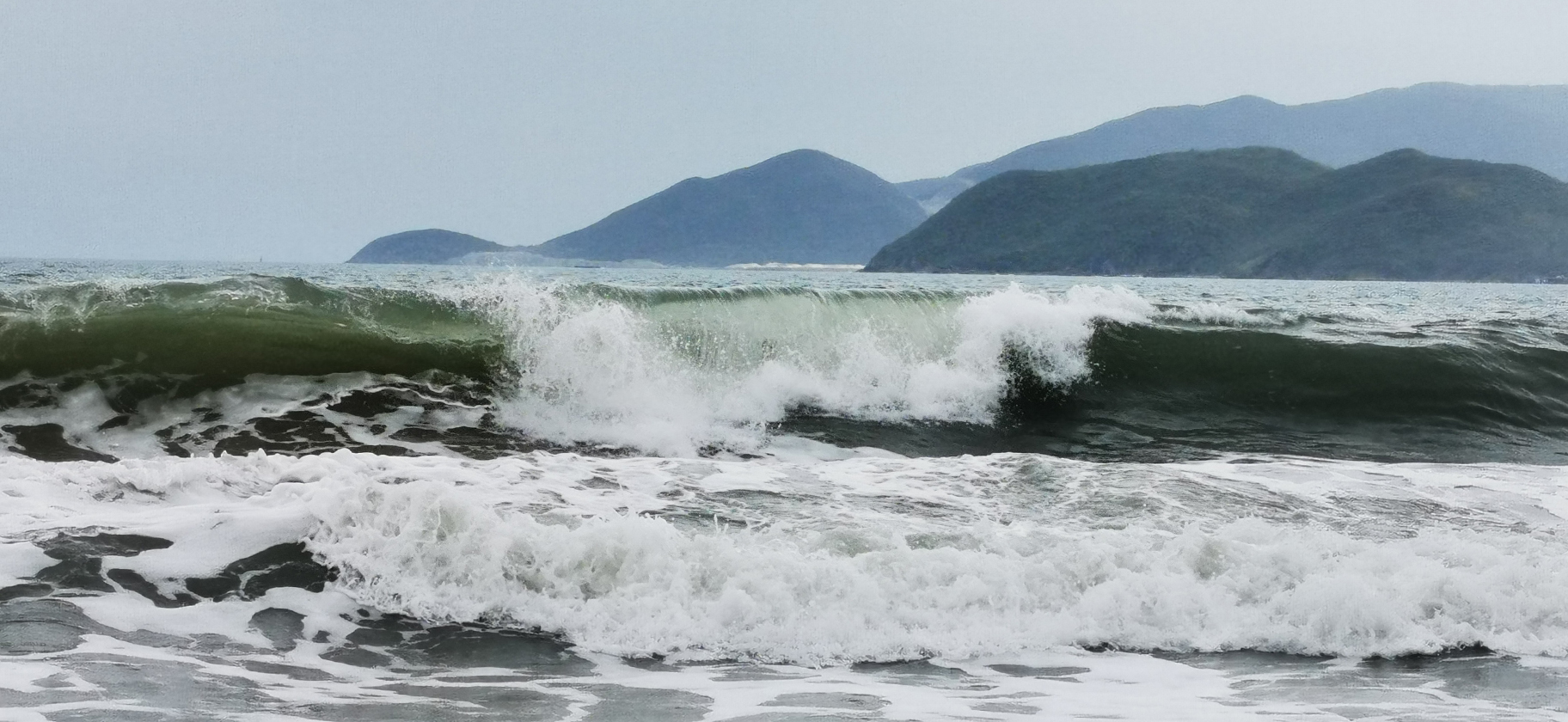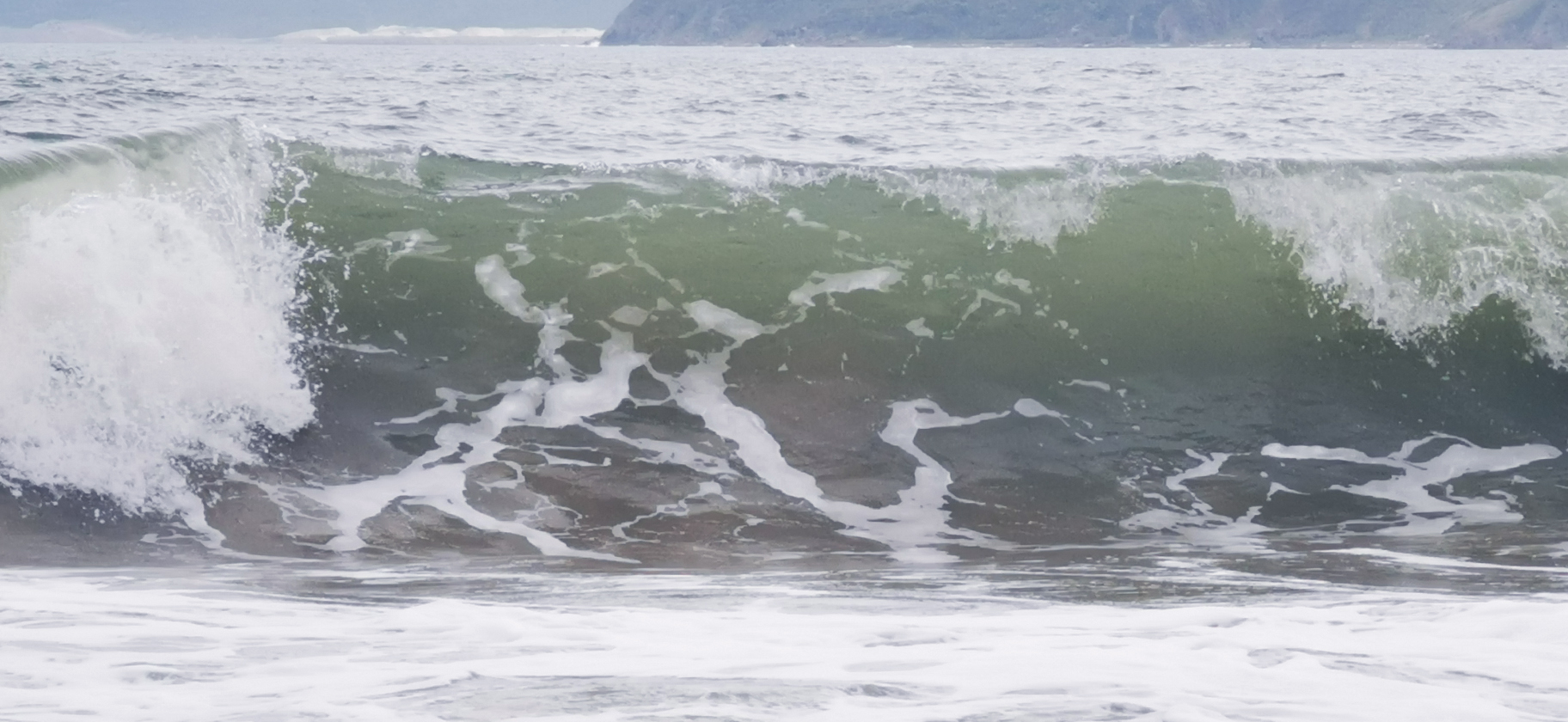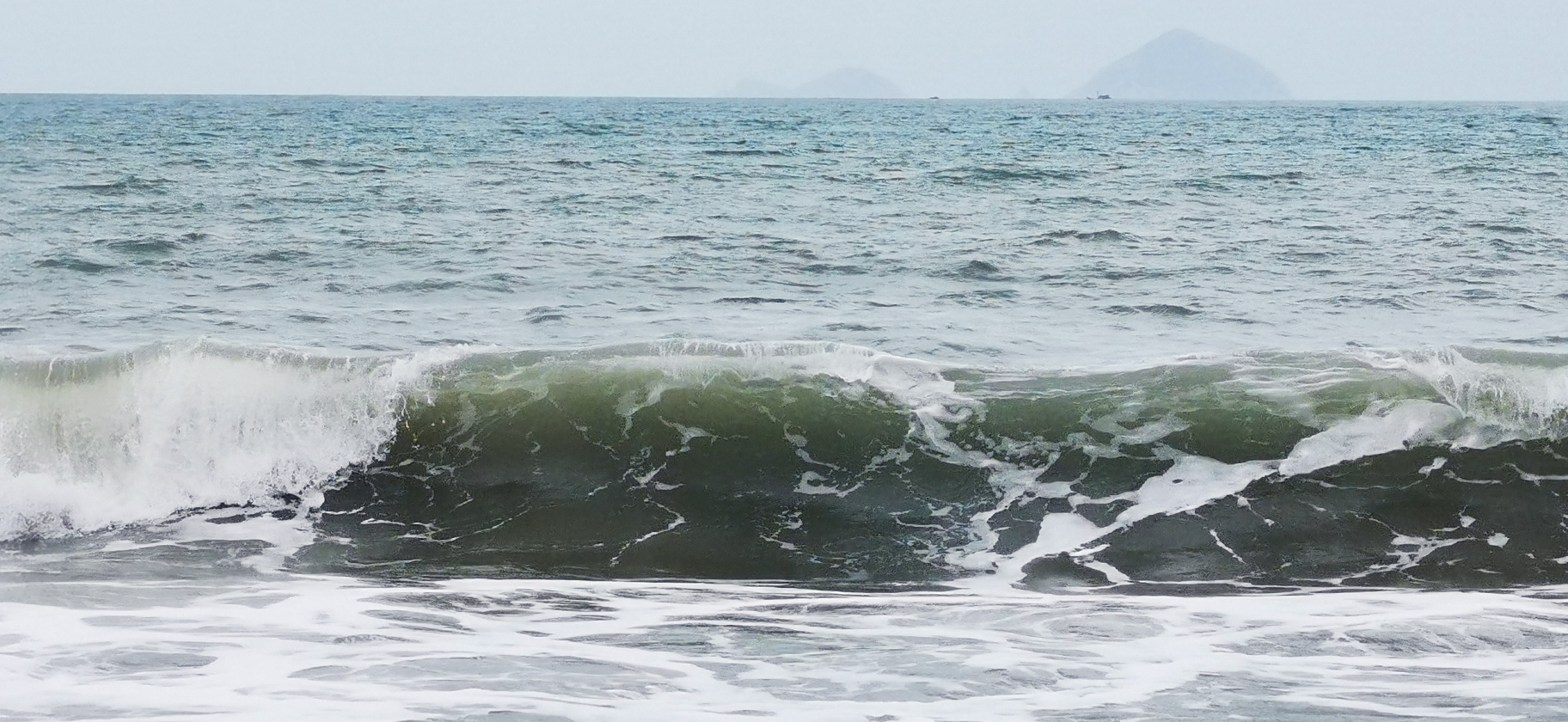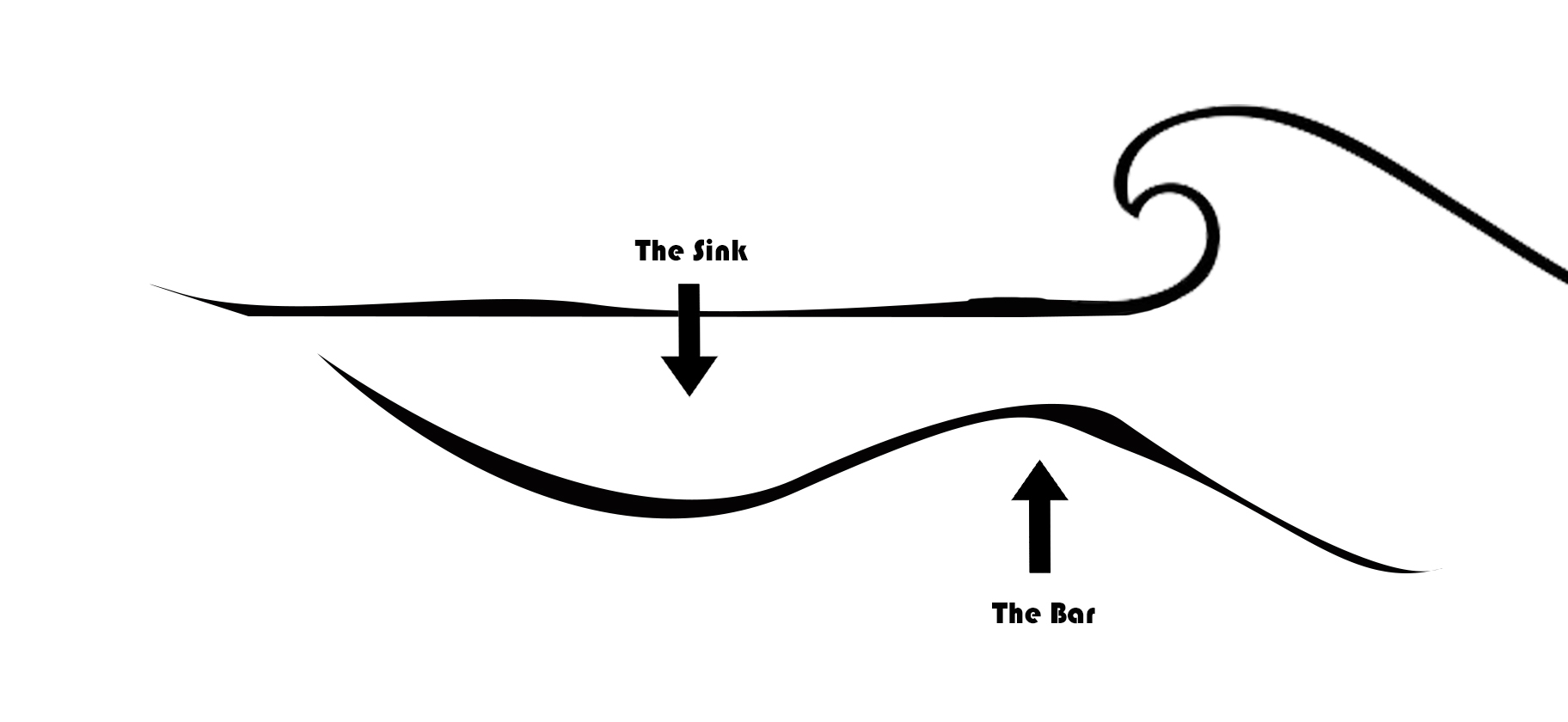A Not-So Scientific Essay on Waves and How to Ride Them

The ocean has a heartbeat. All the water of the Earth is an organ that pumps its living spirit through her body. It gives life to us all – it is our first home – and to commune with that spirit is to commune with the divine.
What makes a great beach? I have never understood people that travel to the ocean solely to lie in the sand and absorb the sun’s rays. Developing a tan is something that should happen by virtue of being outdoors. One should not seek the outdoors in order to tan and I do not doubt that the human proclivity to seek sun for colour is at the root of the skyrocketing rates of skin cancer. The beach was designed for play, specifically waves, for as far as I can see the waves have no other use and they must have been made for something. So, the moon was put into the sky to pull the waves into the shore and back out to the sea so that those who could hear Earth’s heartbeat might know that she wanted all of her creatures to have fun. A great beach has great waves.
Vietnam was a great place to feel the Earth’s heartbeat. But you have choices you need to make such as which beaches to go visit and I have discovered that most recommendations veer toward the beaches that photograph well. The most popular beach destinations are bays whose beaches are confined within shores that break the incoming tide and reduce the waves to a still pond creating the crystal blue pools that so many honeymooners seek. But like most things that spend all of their time looking good, once the effect of being dumbstruck by their elegance has worn off it is clear that there is little on offer below the surface and you realize that they are boring.
A great beach is composed of two parts: the shore and the sea, and both deserve careful consideration when searching for your perfect spot.
The Shore
The first key criteria for the shore, obviously, is that it was chosen to be by a great beach where the waves are tall and break predictably. Beaches with small waves, or unpredictable rip currents that make playing in the sea dangerous, must be avoided at all costs. Similarly, rocky beaches or seas with large rocks or sharp reefs at the bottom need to be avoided as well. So long as the sea meets these criteria, then there are two basic shore choices: city, or resort.
City beaches, because of their dense populations, tend to be less clean and cater to activity-minded visitors. But off the beach, between the wave riding sessions, they also tend to offer an easier living experience with better facilities, better restaurants, and more activities out of the sun. Of these, Nha Trang exceeded expectations.
Of resorts, there are two types: open and closed. One chooses a resort beach for its seclusion, but many can be quite crowded although they are away from the city. However, an open resort beach is always preferable to a closed private one. When a hotel owns a beach they are responsible for the people who use it and a good beach is a little bit wild and a little bit dangerous and private resorts can not handle the liability. Private resorts, like those found along the stretch of road between Mui Ne and Phan Thiet, are designed for families and the elderly – not for wave riding. An ideal open resort has some homes and hotels that line the beach and some small shops and restaurants along the main road. The pullouts along the Lac Long Quan road south of Da Nang and just north of Hoi An are good examples.
The Sea
As we plunge into the sea, with the aim of riding waves, we are now presented with a number of important attributes to consider. First, however, I must point out that wave riding should not be confused with surfing. Surfing is done on a board and has its own vocabulary and its own way of viewing and communing with the sea. In the case of wave riding, instead of riding on a board, you are the board. The goal is to catch just the right wave at just the right moment and have it carry you with all of its fury to wherever it may deign to leave you. If you are doing it right, then the perfect wave should strike a delicate amount of fear into the pit of your stomach and by the time you decide to call it a day you should have a few dents and a few scratches.
Each wave has a set of component parts that are important to pay attention to when wave riding.
Current: The first thing to note is the direction of the tide. An ideal sea pushes straight into the shore and rips straight back out. Current, or lack thereof, is a key identifier of a good sea. All seas have at least a slight current and you will notice that all the waves break the same way. Less desirable seas will have a strong current either up or down the beach which usually has the effect of transporting garbage or seaweed to wherever you are standing, or worse you may find yourself at a beach with a current where the push and the rip mix together to create choppy waves and then rip back out to sea in a semi-circular pattern. It is important to always keep a reference by the beach, like your bag or a building, because it is not uncommon to have the current send you several hundred meters down the beach in no short amount of time.
The Push: Every wave has a Push that is the lowest part of the wave happening right at the surface of the water. The Push can also refer to the first slight undulation of the water that comes right after a particularly large wave. You will notice The Push if you dive under the large wave and come up right after it has passed. It is a bit like a half-wave in between larger waves.
The Crest: The highest point on any wave is The Crest. The rhythm of a wave, the larger they get, is similar to taking a large deep breath. It builds slowly like breathing in and then exhales with a force that is its completion. That brief moment between inhalation and exhalation is The Crest. Crest Riding, also known as Top Sailing, is a critical skill to master in order to be effective at wave riding. Crest Riding is when you stay ahead of where the waves actually break and bob with them at their highest point like a buoy floating in the water. In all fairness, Crest Riding is good fun in and of itself and you can spend your day just doing this and never actually ride a wave and feel pretty satisfied.


The Crush: Only the largest waves will have a Crush. If you pay very close attention to any wave as it approaches, you will notice that the top of the wave appears to roll backward in the opposite direction, similar to the spokes that appear to be going in the opposite direction of a rolling wheel. In wave riding, this phenomenon is called The Roll. Very large waves will reach high enough that enough water with forwarding momentum from the back will spill over The Roll. It is the force of all of this excess water rolling forward, spilling over the top of the wave, that creates that famous barrel effect that surfers often refer to as “the green room”. In wave riding the effect of the water spilling over the wave and curling back down is The Crush. Although you can ride a wave without a Crush, catching a wave right between the Crest and the Crush will yield the best ride. It is very important not to try to ride a wave with a Crush if you are unable to catch it at the right time as attempting to do so can lead to injury.
Understanding the nature of the waves is critical. It is also important to develop a good wave riding technique and good timing. Trying to ride the waves closest to shore is a waste of time and you are more likely to end up with sand in your ass crack than you are to have any fun. By the shore, The Roll and the wave heading back out to sea, also known as The Rip, mingle together in unpredictable ways with The Rip trying to ride underneath The Roll. The effect is likely to have your lower limbs bouncing in every direction and have you falling over. You will need to head out a bit and the water will start to get deep and you will start to think that there is no ideal spot on which to stand, but it is worth venturing out a little further if you dare. Eventually, you will come to The Bar which is the ideal place to make your stand. The deep water between the shore and The Bar is known as The Sink and that is your safety area. Waves do not seem to crash in the deepest part of the sink, but if you are smart and you know you are there and if you are tired you can ride all the Pushes back to shore.

Once you have found a comfortable spot on The Bar, where the water level fluctuates between as low as your knees and as high as your chest, it is time to start finding waves to ride. To do this effectively, having a good sense of how to Top Sail is essential, but you will also need to know how to perform a Dive. If you cannot Dive then you cannot stay out on The Bar and you will get nowhere but blown back to shore. Any wave that has already broken and is now White Rolling toward the shore might need a dive if the water is above your head. If a wave has a Crush and you were unable to catch it or ride the Crest it will absolutely require a Dive. The Crush is excess water that has little actual force – it is not, in fact, part of the wave – and it is the water on the far side, The Roll, that has all the force that will sling you toward the shore. The Crush just comes down like rain but it is a sign of a mighty Roll and it is important to get underneath it before the wave reaches you. It may seem counterintuitive, but the way to properly perform this maneuver is to thrust yourself with your arms in front of you right into the base of the wave. When executed properly you will notice that you will come up on the other side of the wave and you will not really have moved or been shaken. You will then be able to ride the trailing Push and prepare for the next wave.
It is important not to fixate on the wave right in front of you. Wave riding is all about being predictive. The ocean has a heartbeat and if yours is in sync with hers then you will know when the next one is coming and which waves will be ideal for riding. You should never try to ride every breaking wave or else you will find yourself always chasing them and you will not be ready for when the right one comes along. After enough waves, and when you have begun to understand the sea’s rhythm, you should be able to start noticing potentially suitable waves as they emerge on the horizon, and you will know if it is better to bypass the wave in front of you in order to prepare yourself for the next one.
If you are ready, and you have properly prepared yourself for just the right wave, then it is time to ride. You will be looking for waves that are building enough height to have a high Crest. These will have enough of a Roll to catch you. If you are lucky you will catch a wave with a Crush that you will never see because in order to ride the wave you will need to turn and point yourself toward the shore. It is important to be able to identify the sweet spots like where the Crest will be and you might have to haul ass to get into just the right spot. As the wave rises to its peak you may need to swim a few strokes to really catch it, but in a perfect world, you will have your legs firmly planted and will be warding off the strength of The Rip right at the moment that the oncoming wave topples over you.
Up until now, you have been part of the sea, but never part of any one wave. If you catch the wave at just the right time you can feel it wrap its arms around you, and you and the wave become one force. Right when the wave catches you, your arms should be together and forward and you will feel yourself get tossed as from a slingshot. Your body will suddenly race forward faster than you would expect at which point it is important to tuck your arms back in and over your head. The momentum of the wave and The Roll, if it is strong enough and if you caught it right, should topple you cartwheeling end over end and you might even bounce off the sand on The Bar. Hitting the bottom can be shocking the first few times it happens and you may think that the waves are too big and the situation too dangerous. It is important to know your limits and always respect the sea. Riding waves is about becoming one with her, not taming her, and it is important that you remember that you are in her world. More often than not you will emerge unscathed on The Bar and if you really caught a great wave you will know it by ending up in The Sink.
Now you have the tools you will need to turn yourself into a capable wave rider. But lastly, you will need to summon a bit of courage. The objective is to experience riding waves and in so doing you surrender a good deal of control because she is going to toss you and spin you as she pleases and you could get seriously hurt if you try to fight back. But even in the act of surrender, it is important to understand that you are going to get softened up and it is vital not to let a few small cuts keep you from frolicking in the sea altogether. You are always on the cusp of a great wave and each time you even just try to ride you can gather new information about what to look for including which beach has the perfect combination of shore and sea. Once you find those secret ingredients and you have the chance to ride your perfect wave, you may never want to leave.
